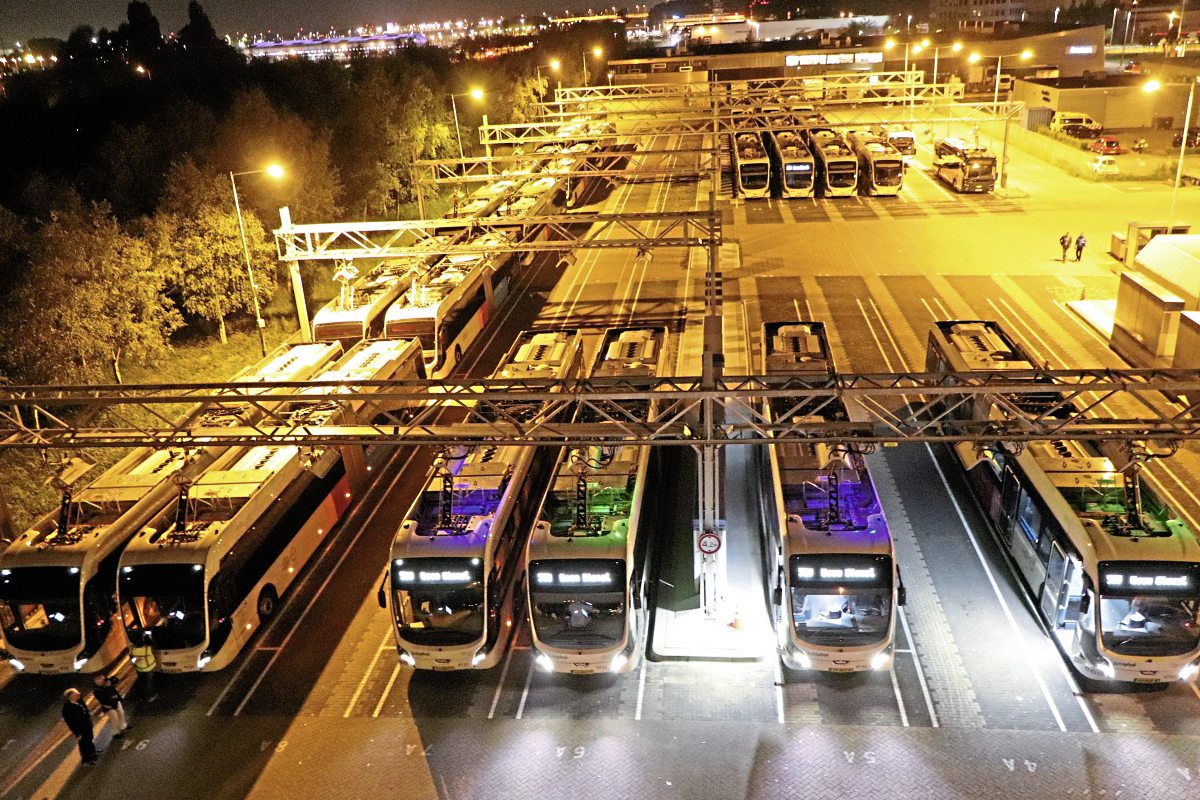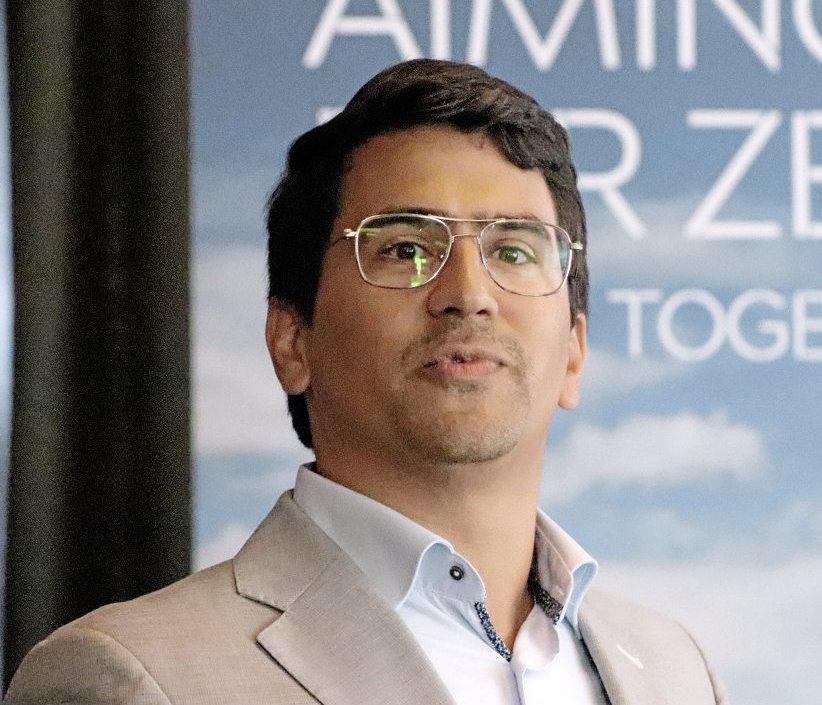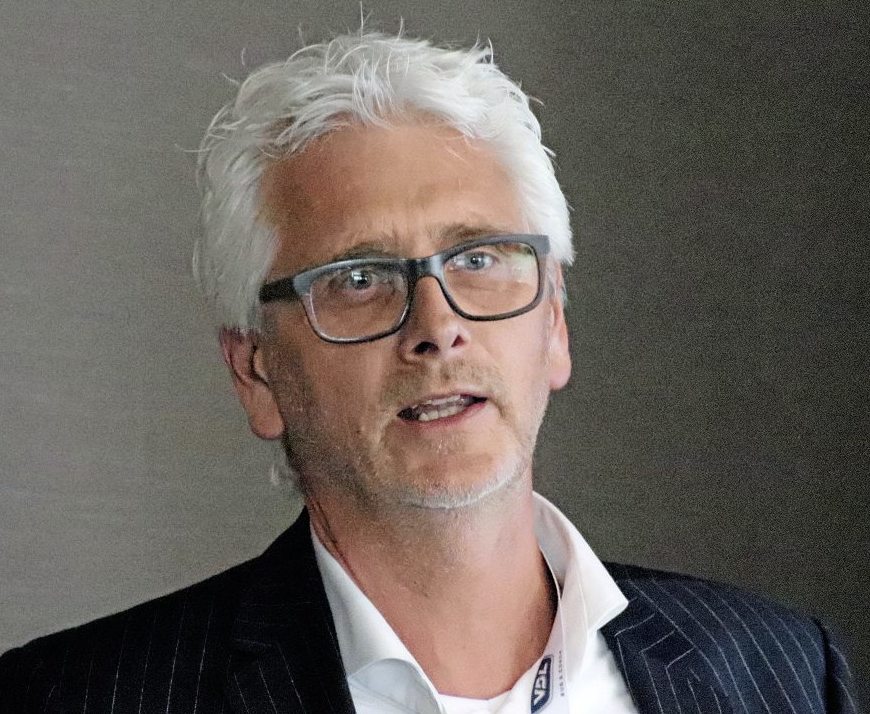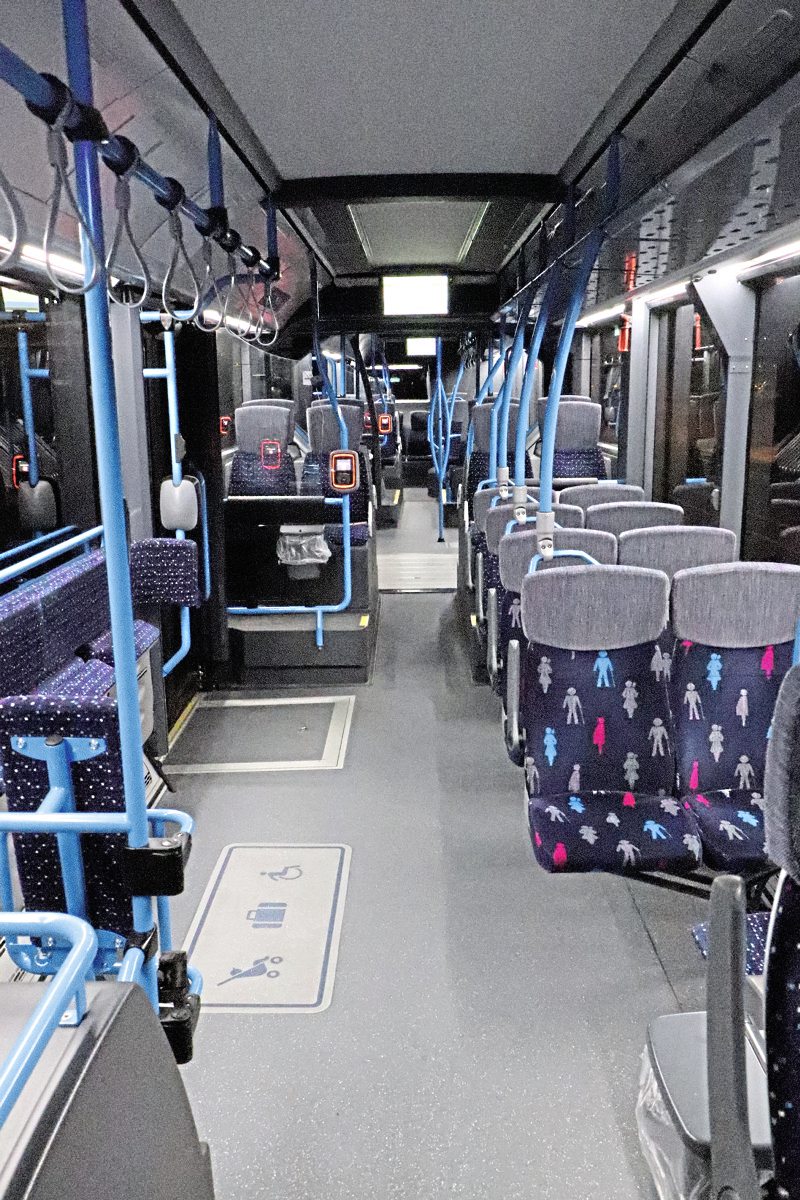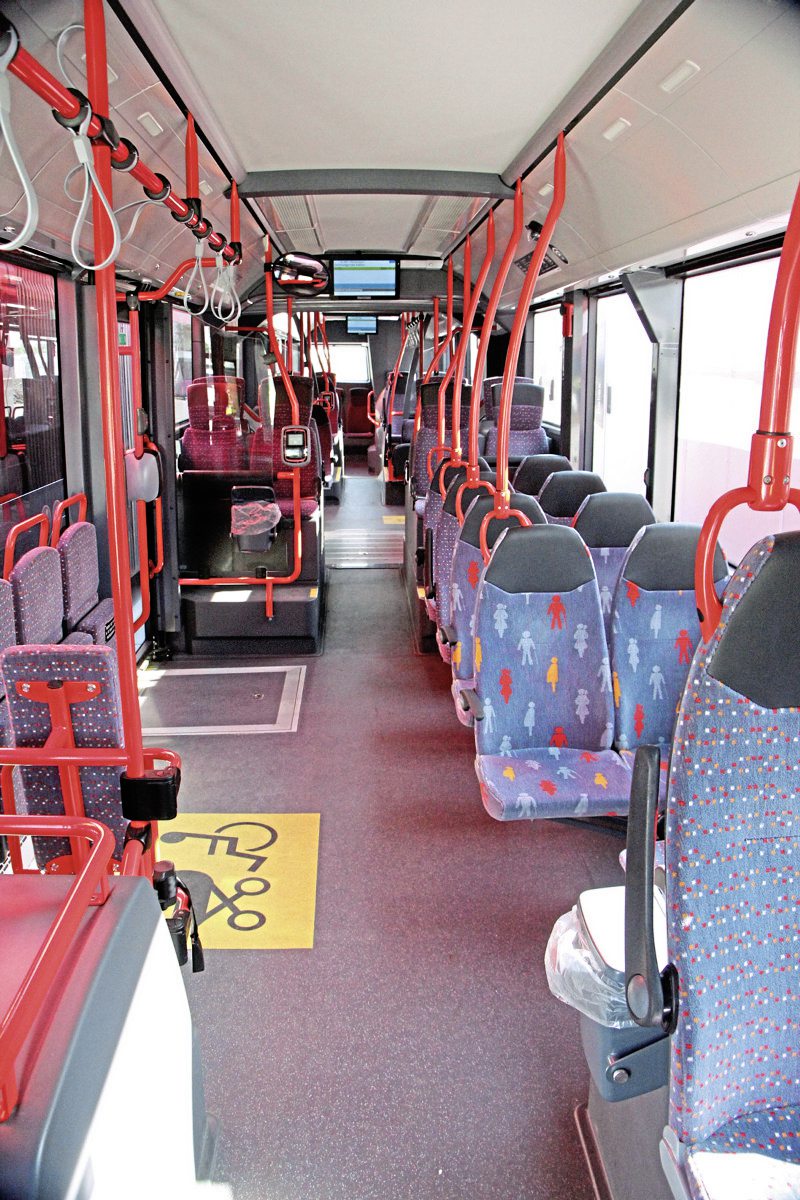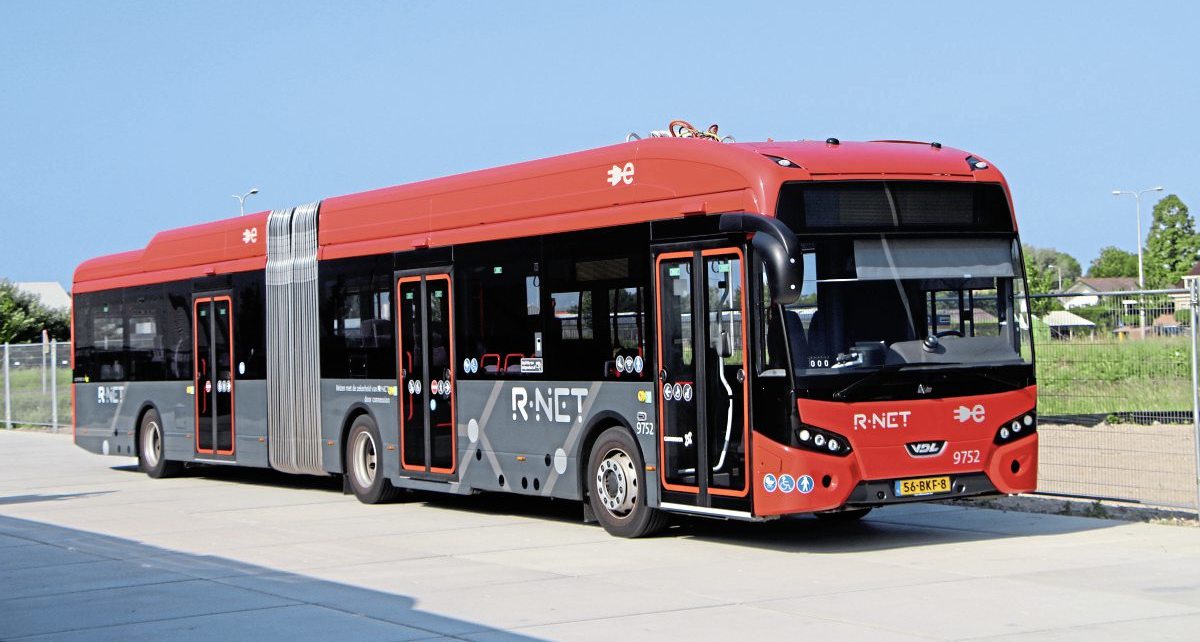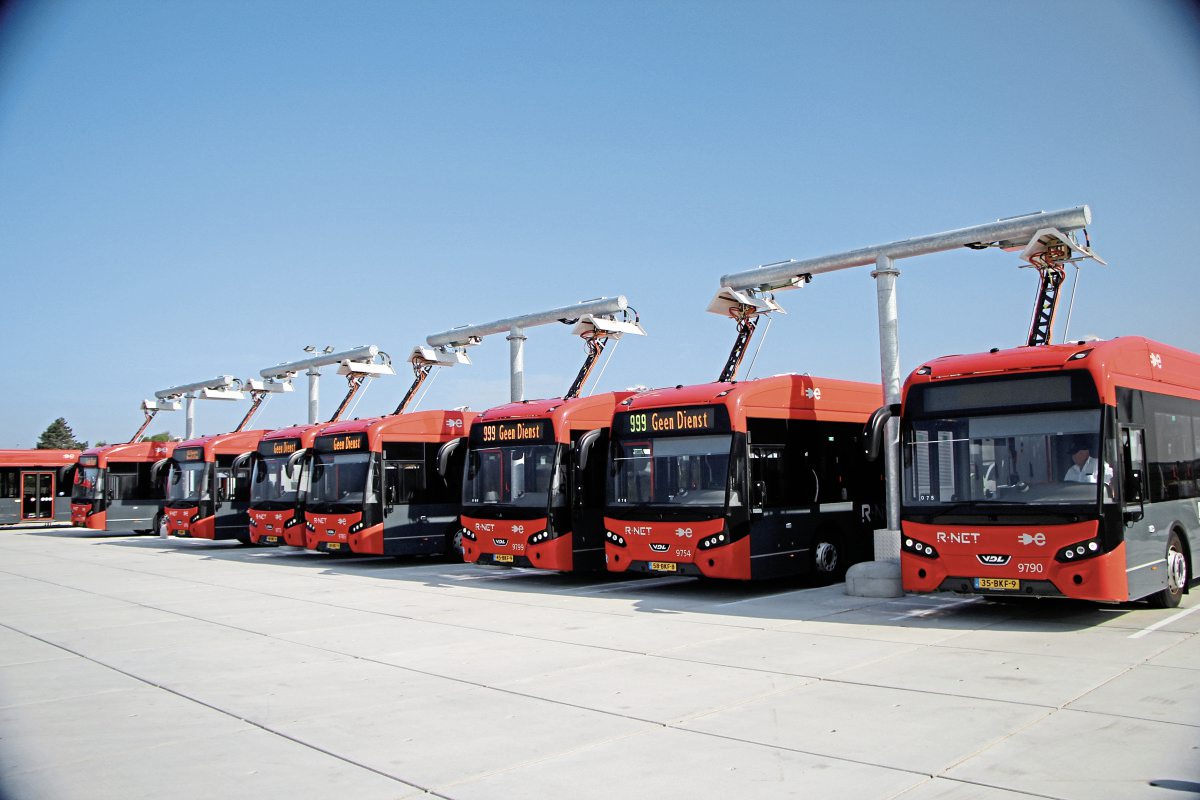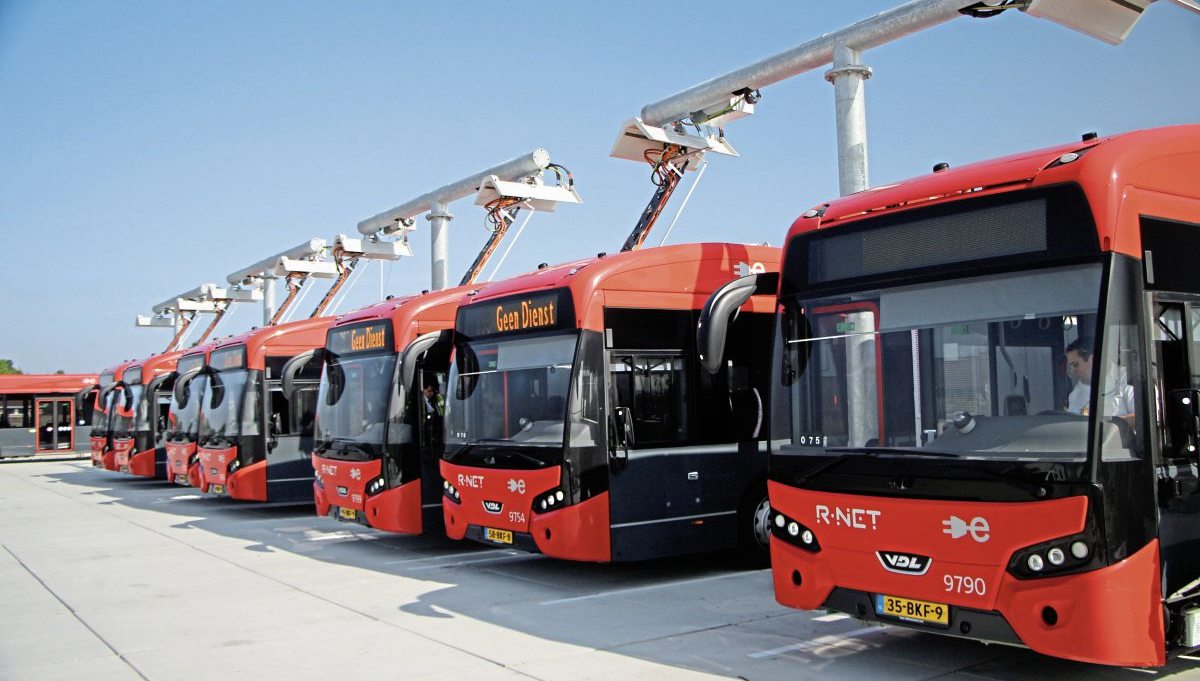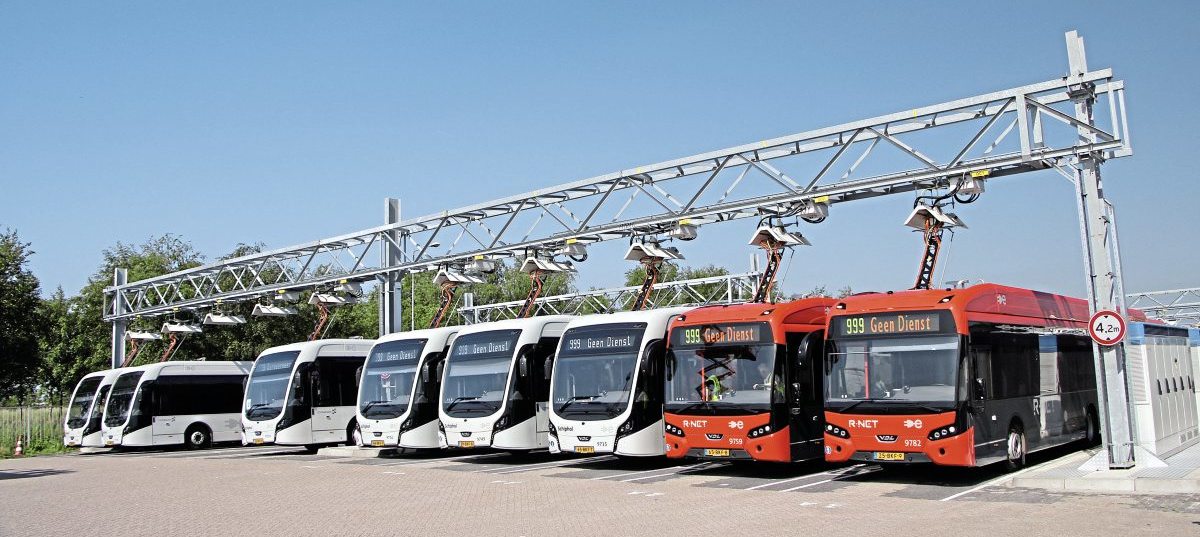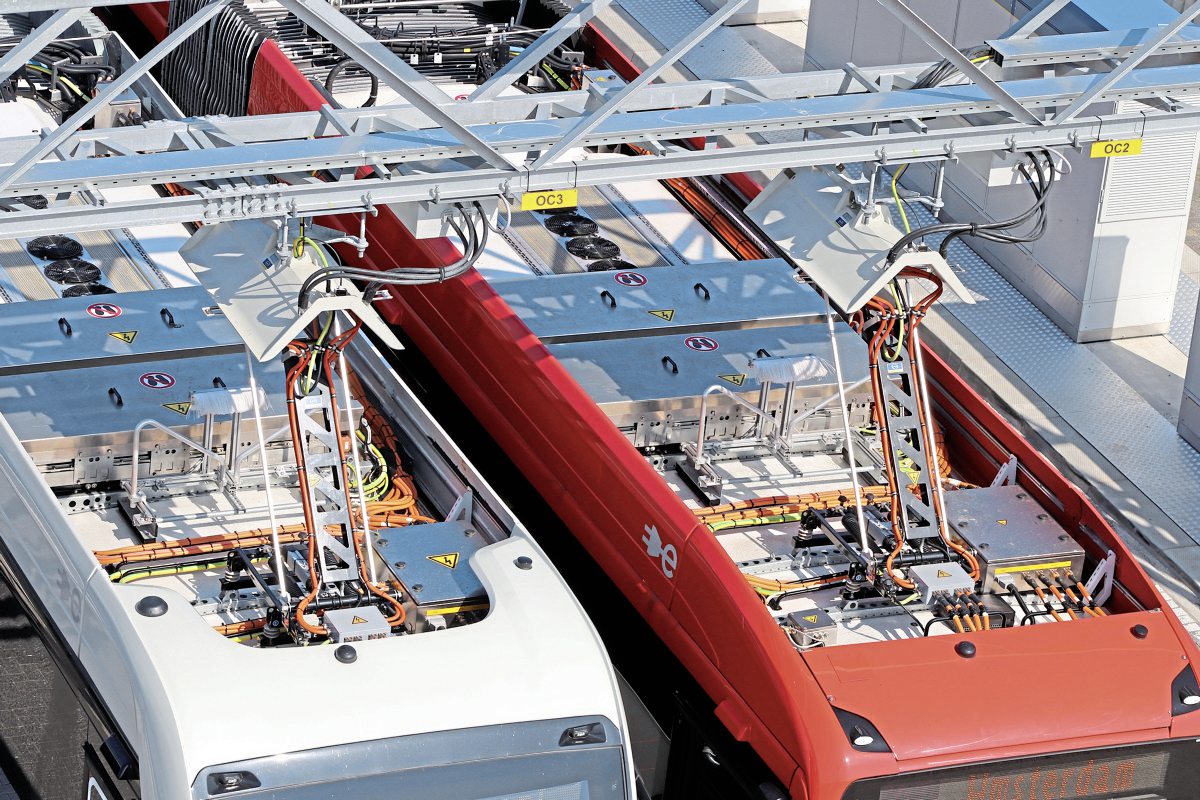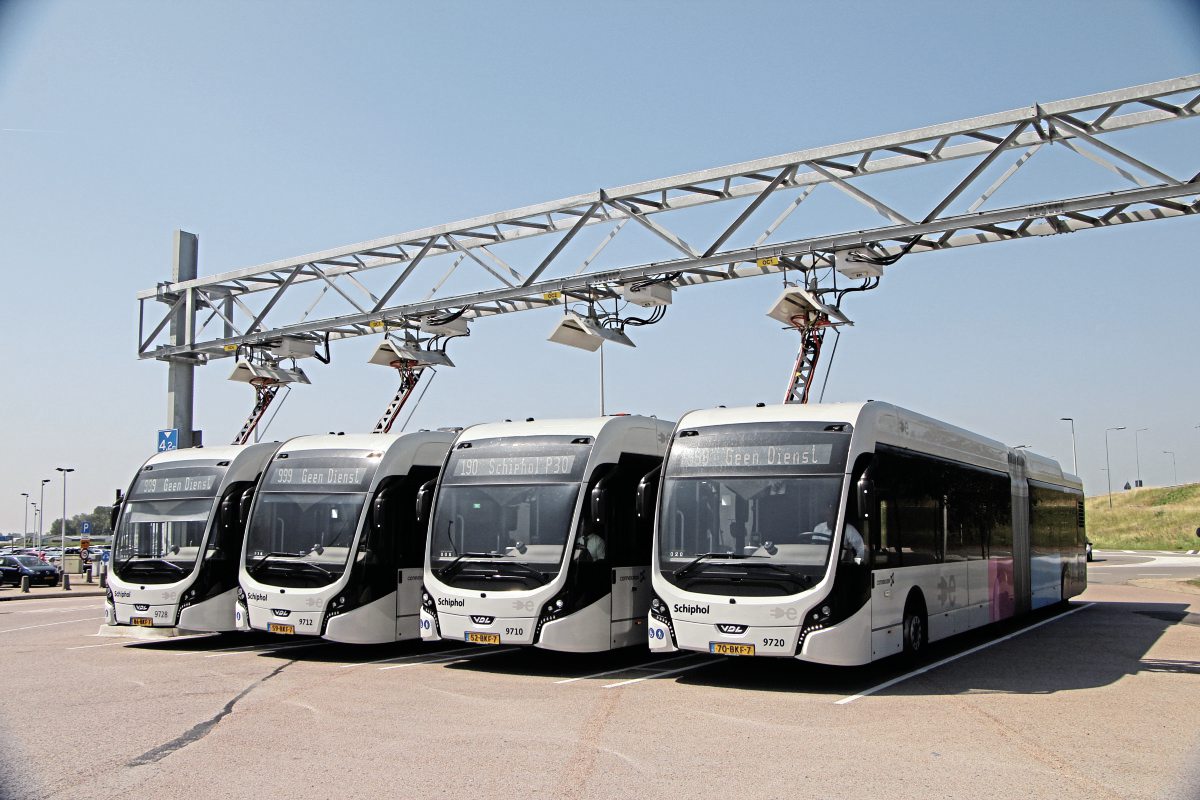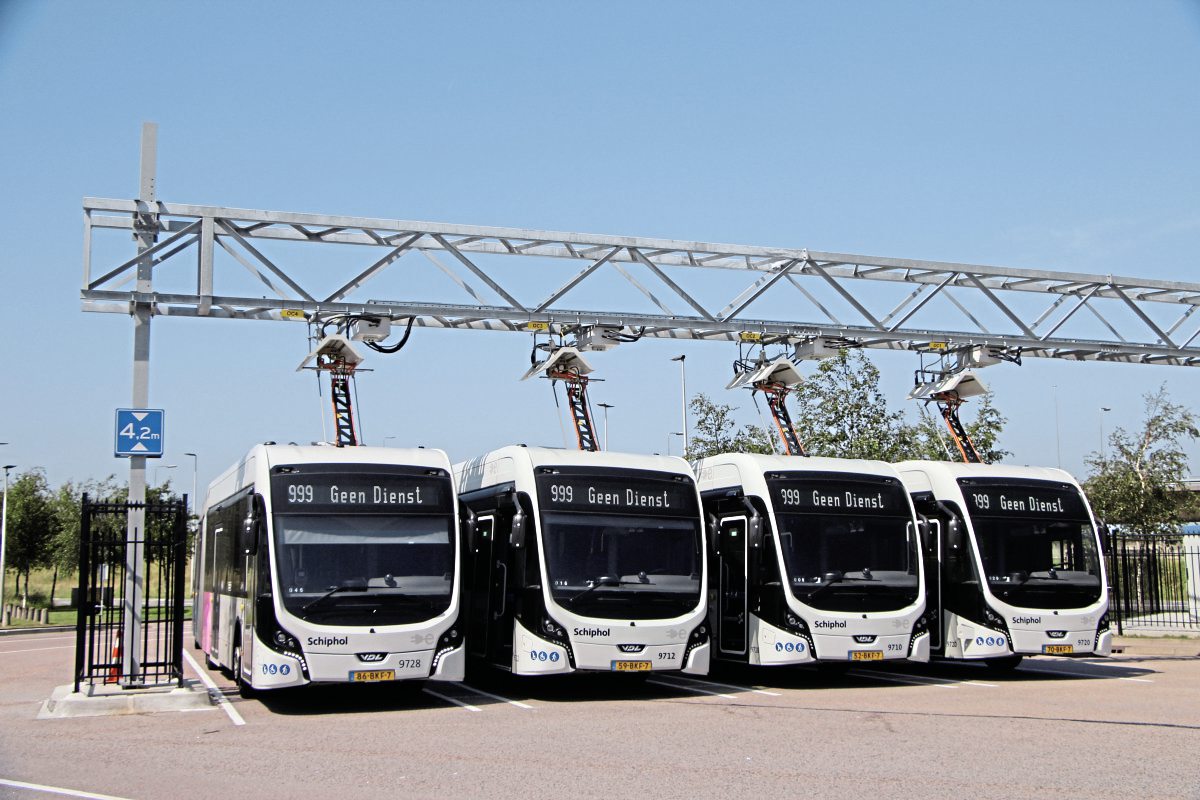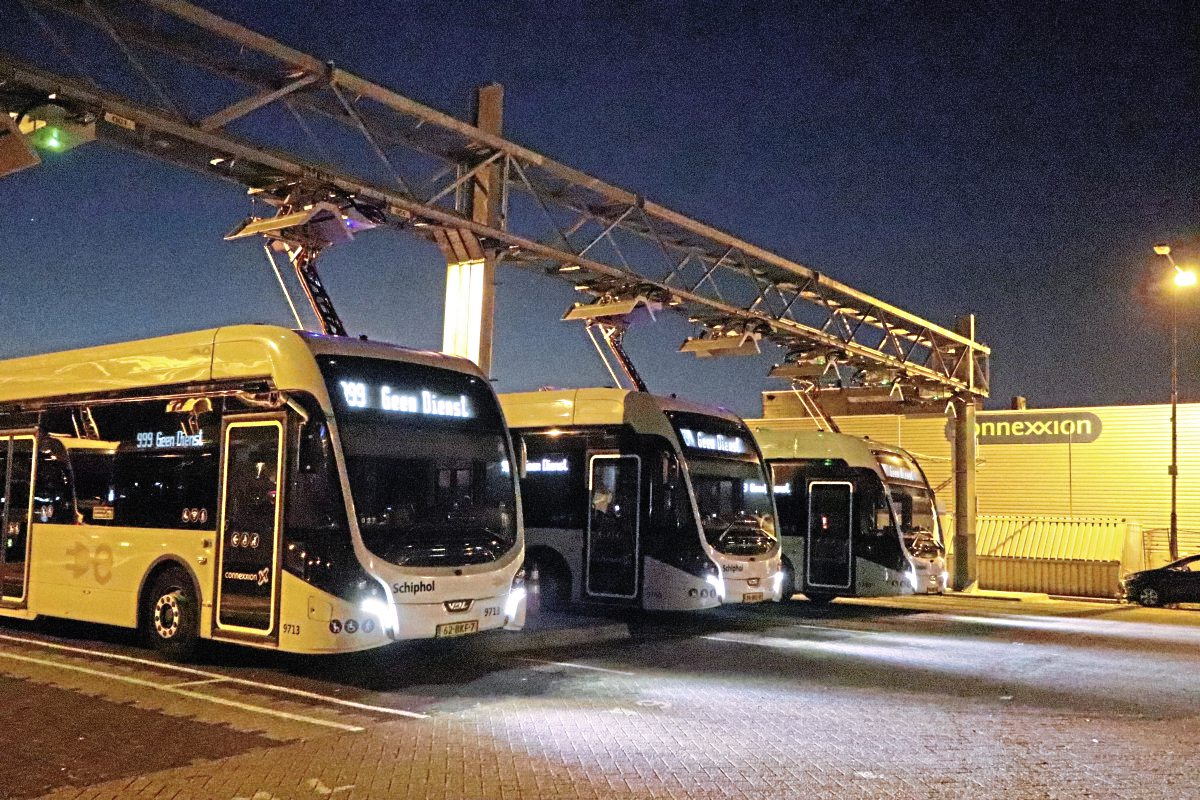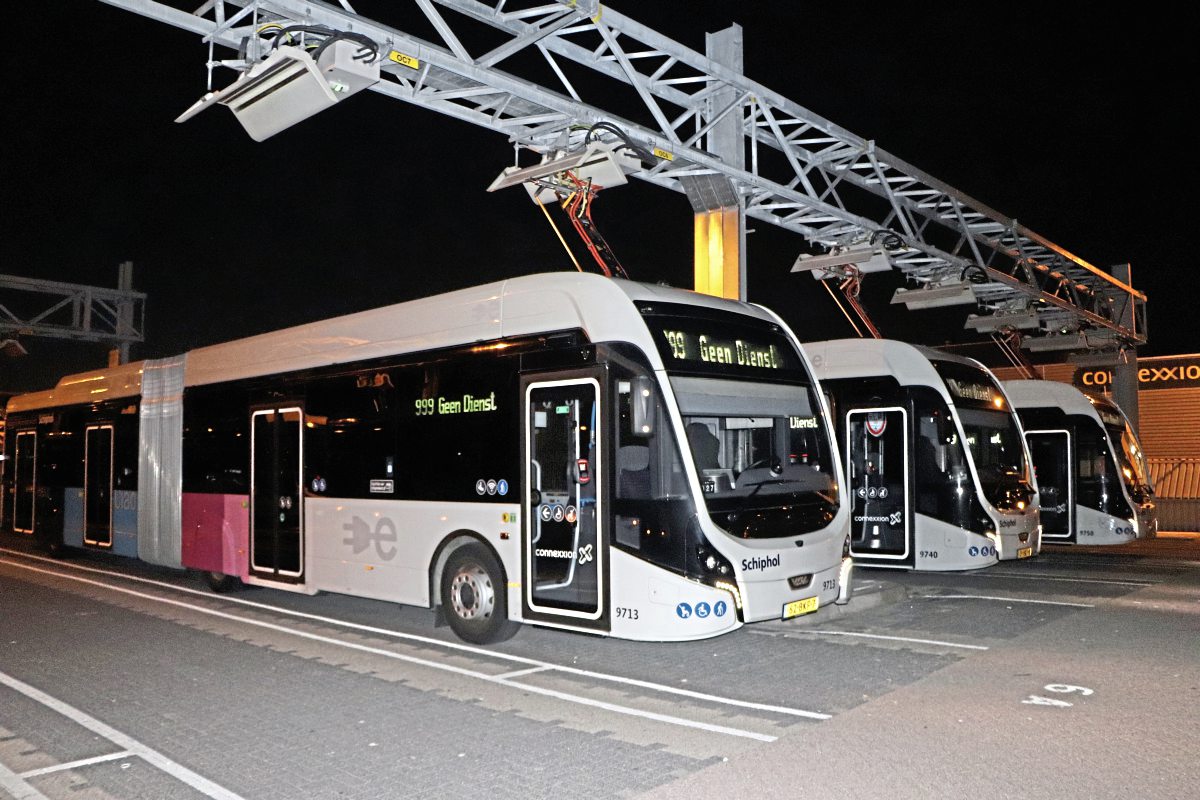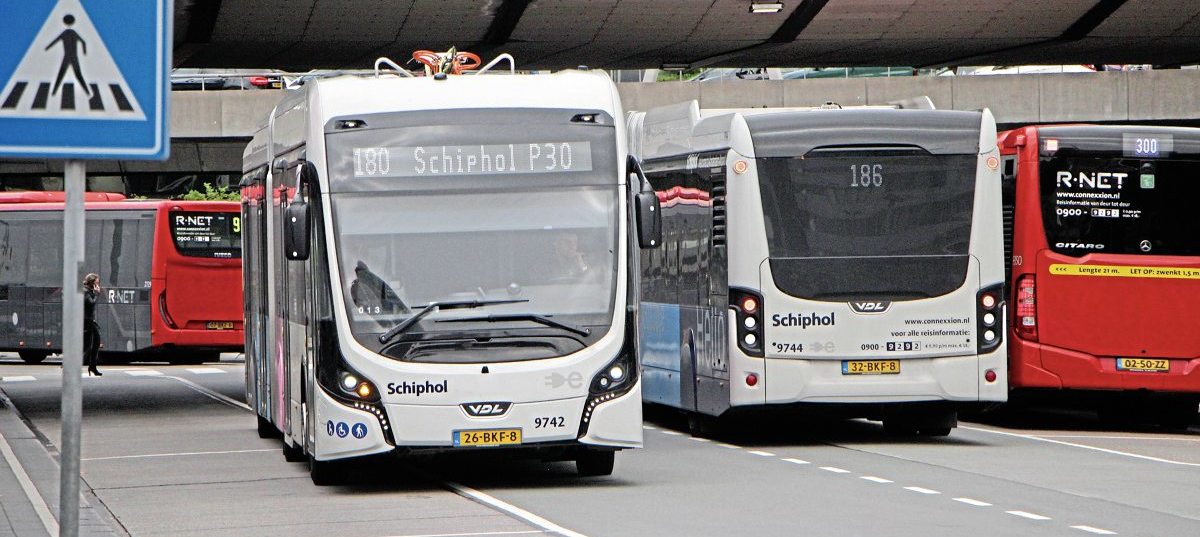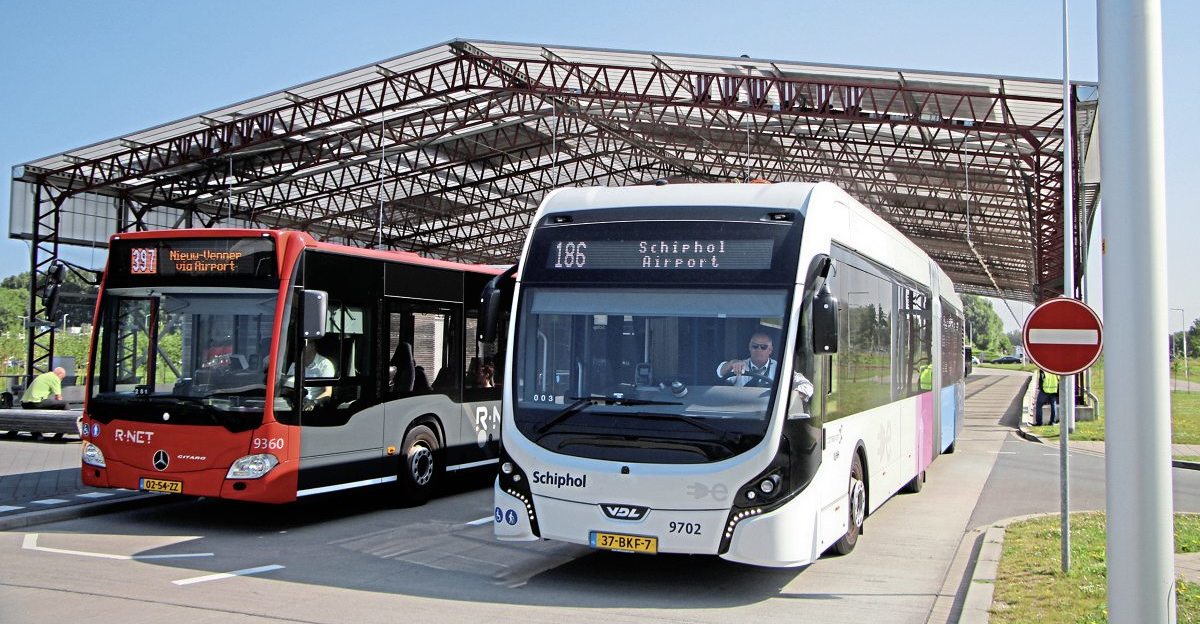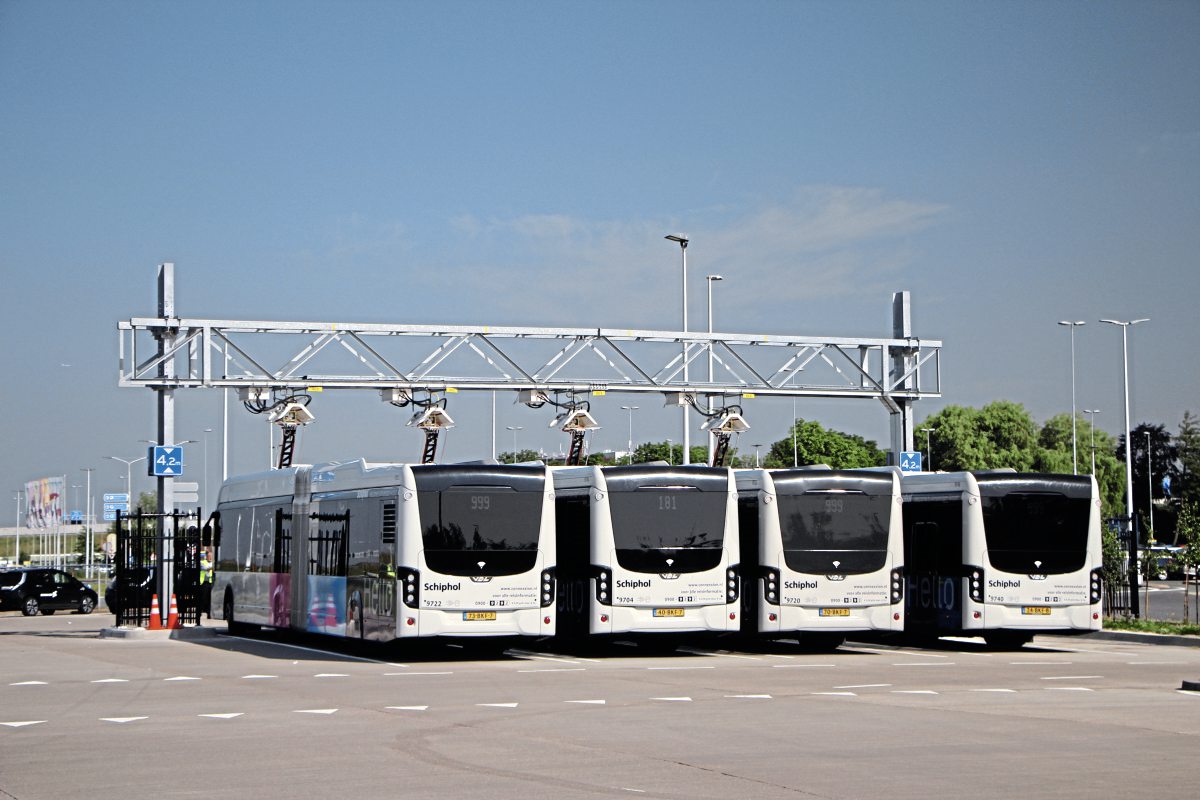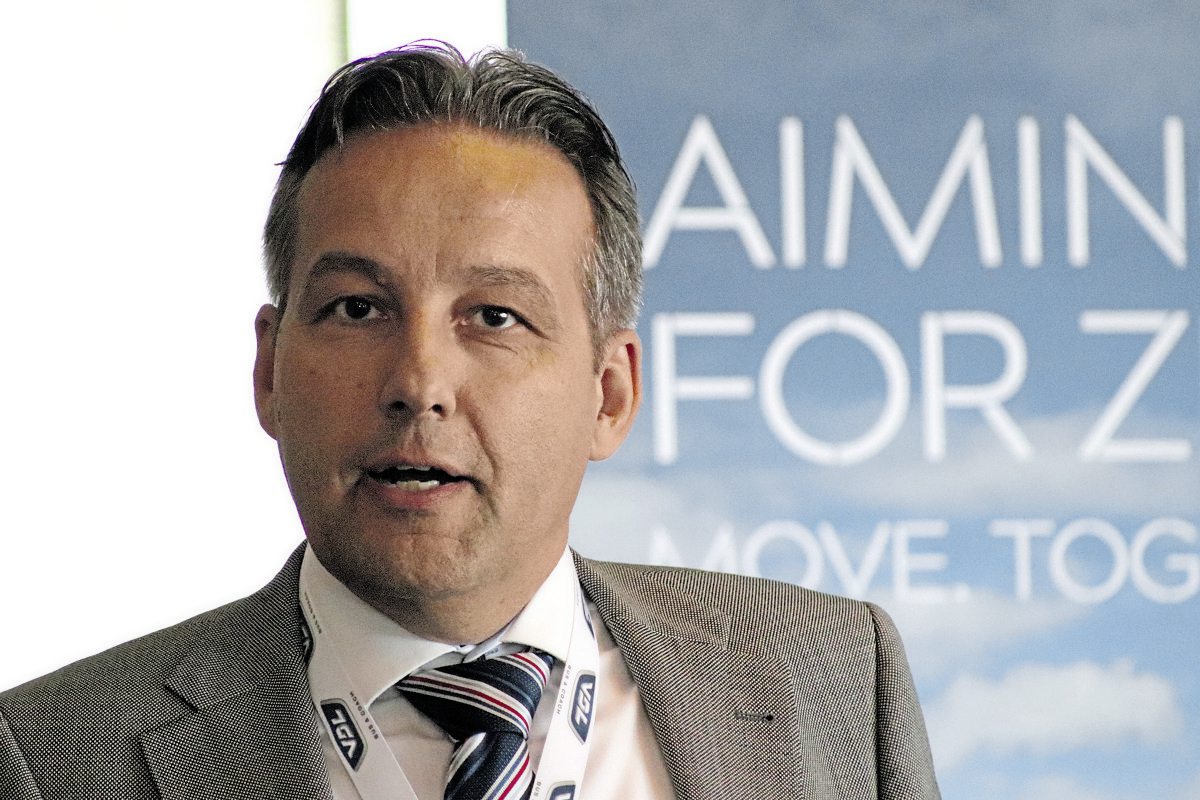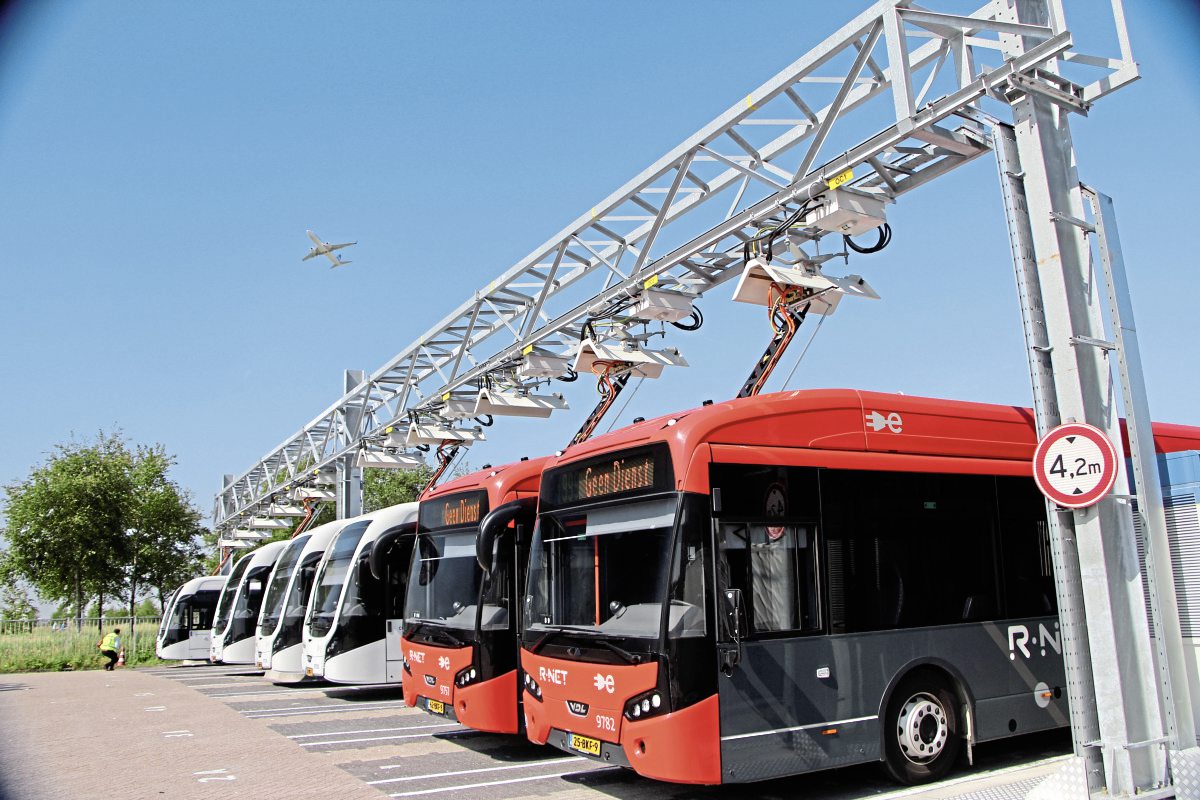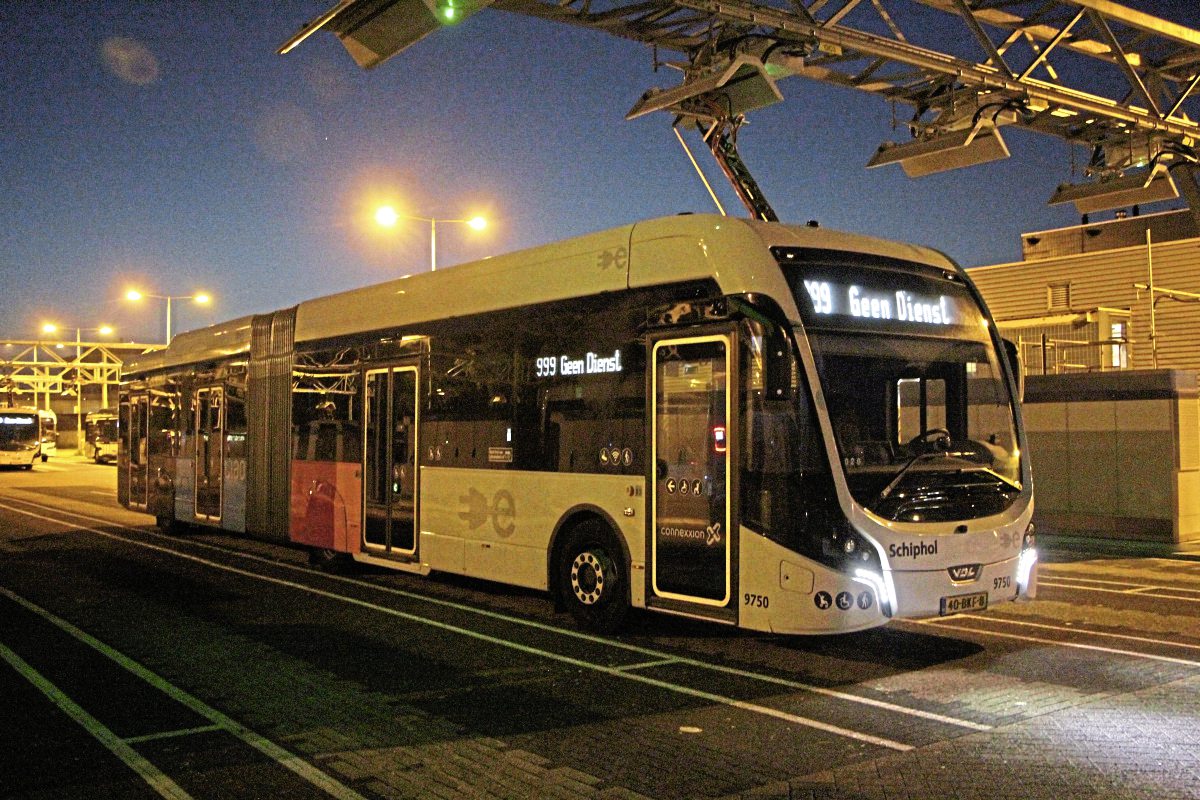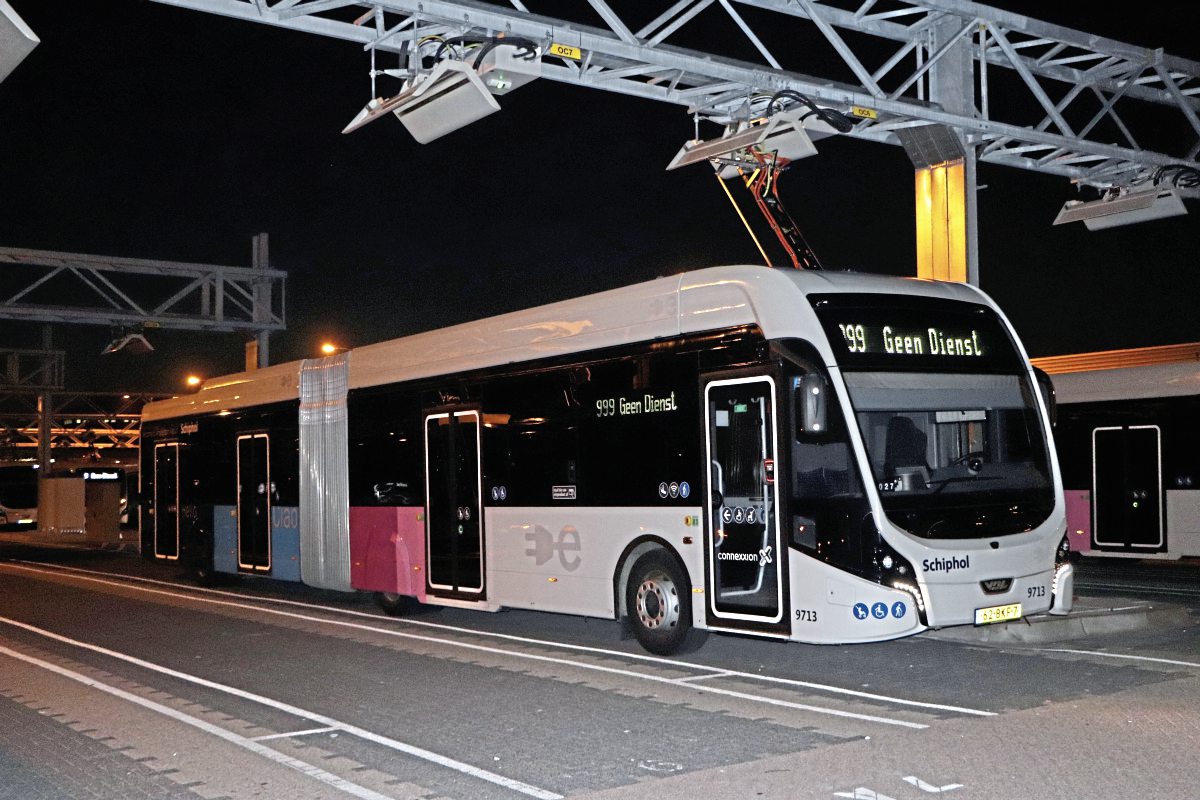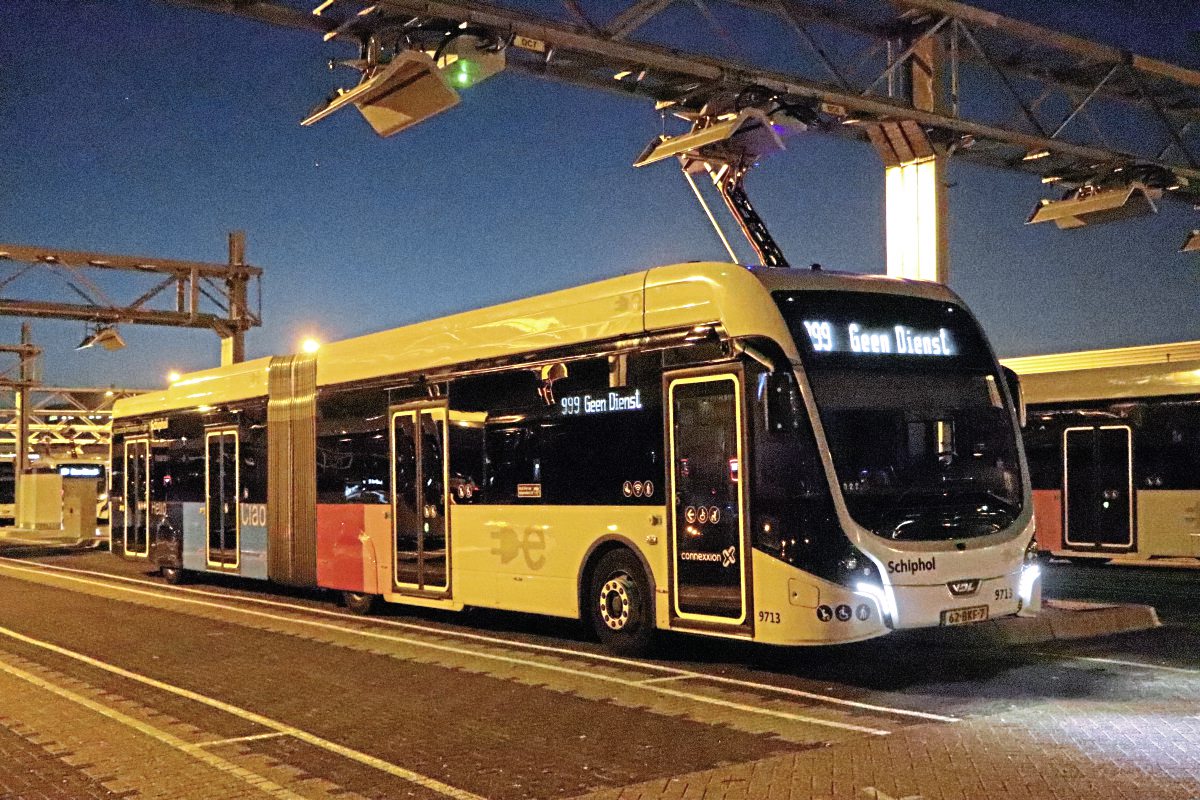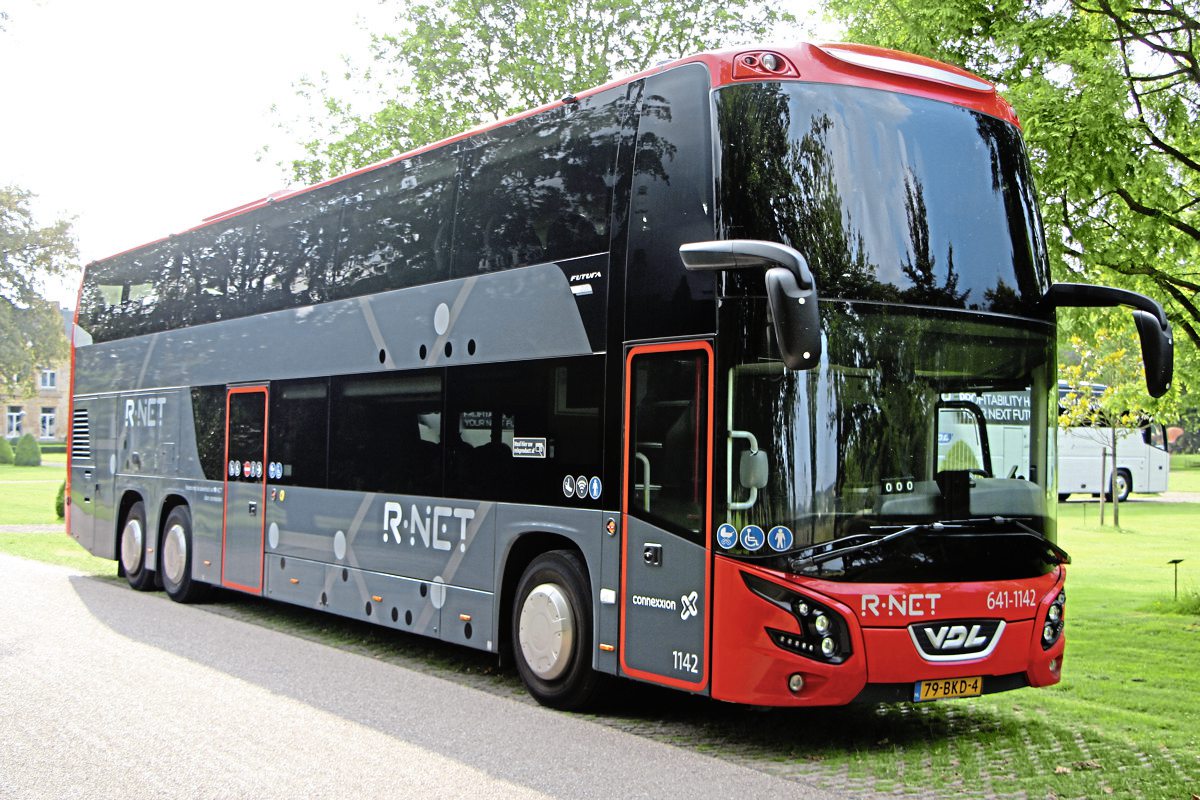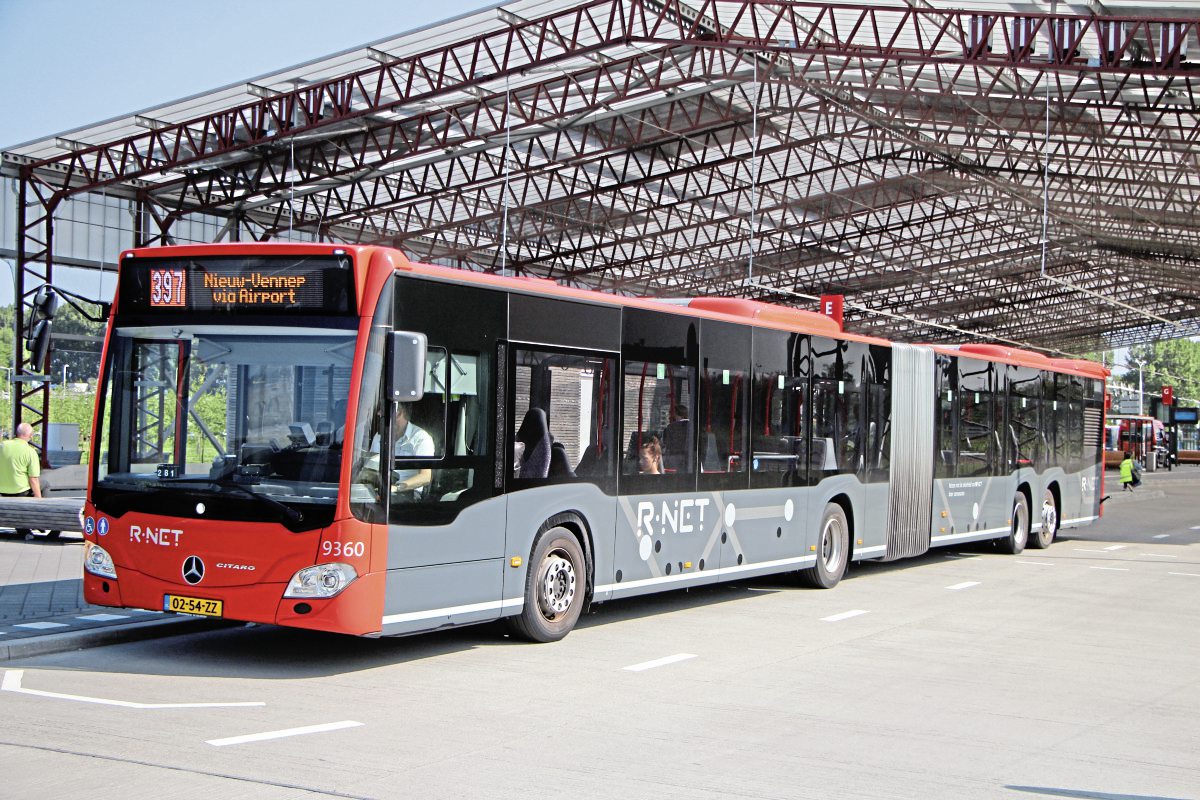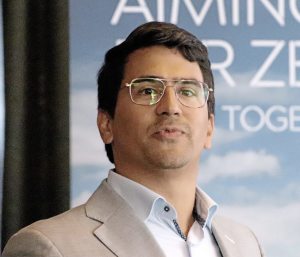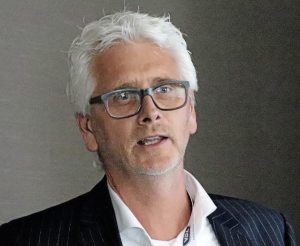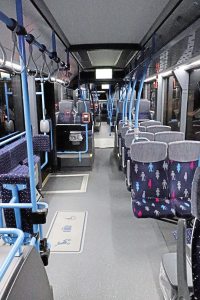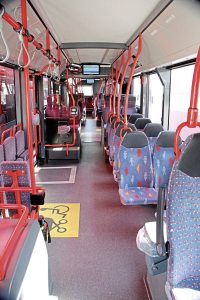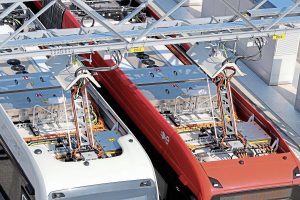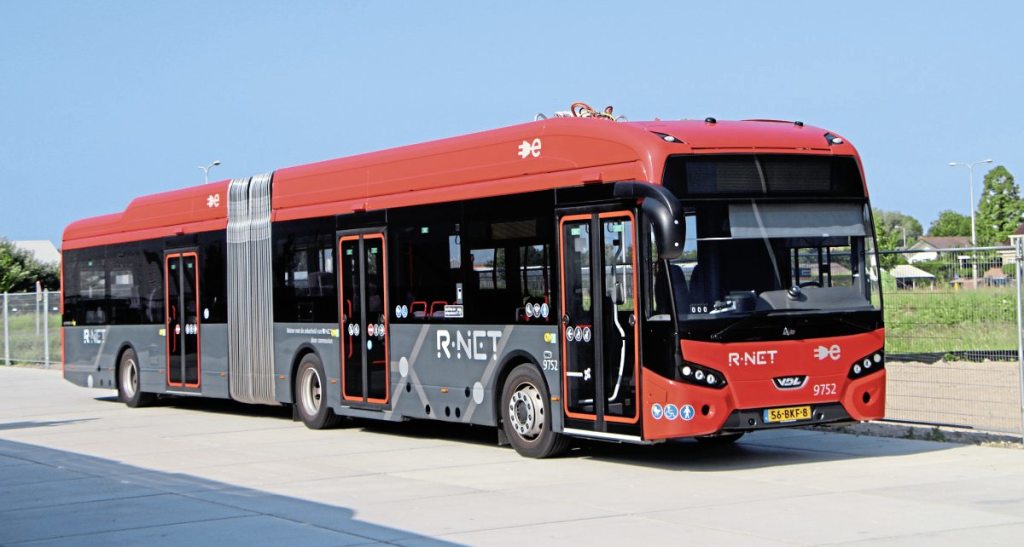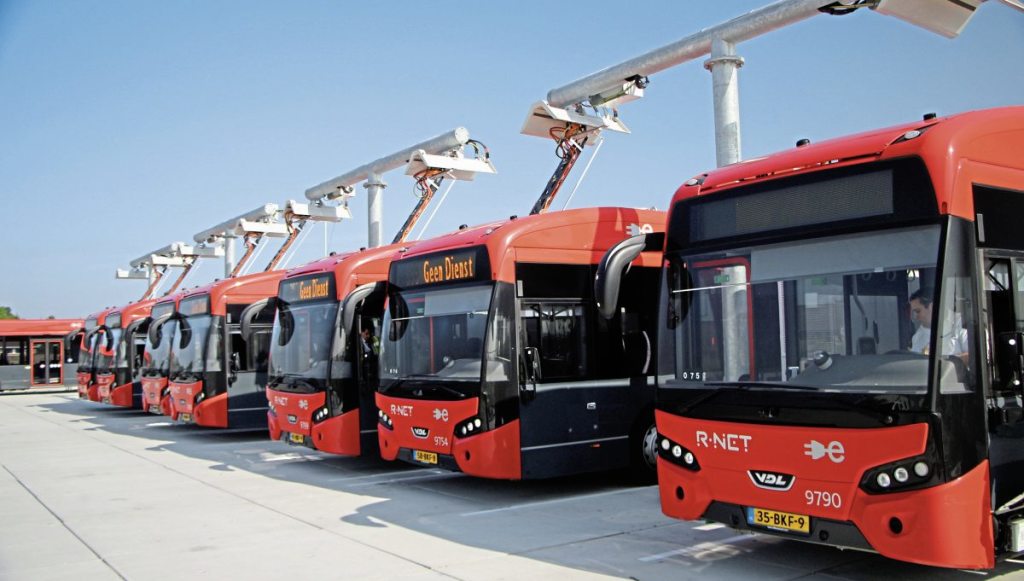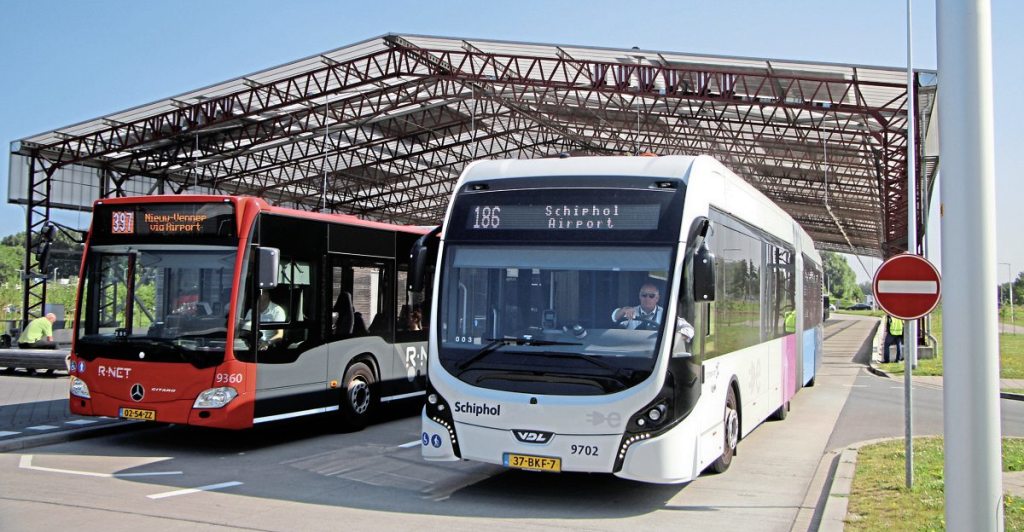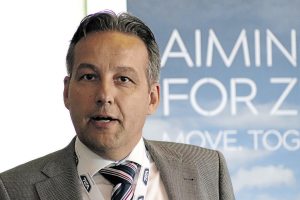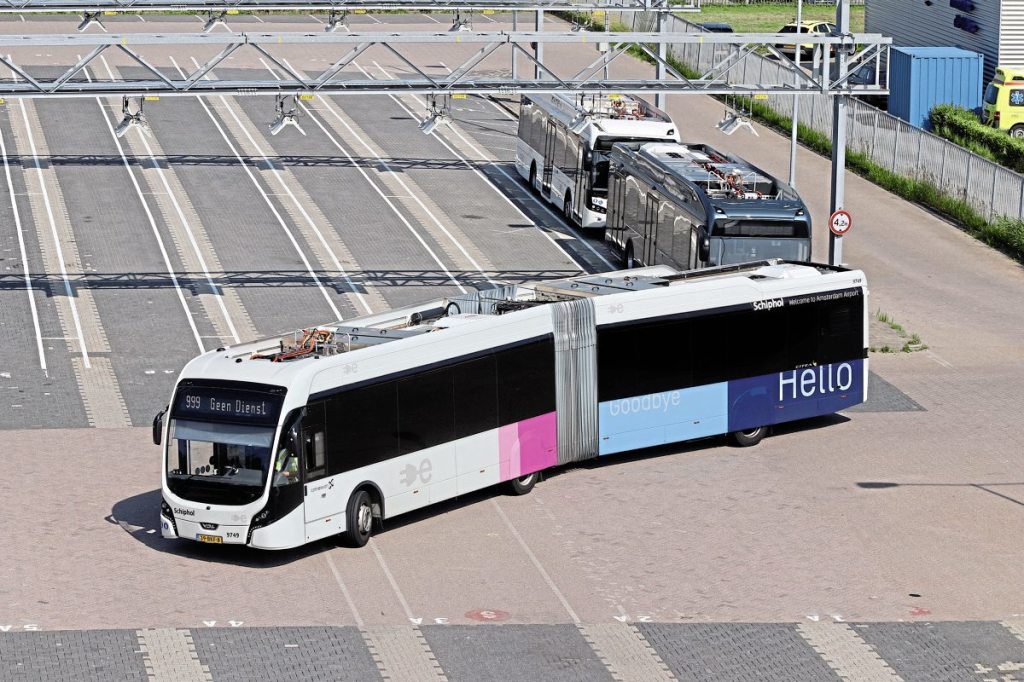Electric avenue
Amsterdam has zero ambitions – emissions-free bus services within its franchised network. A month ago, VDL delivered Transdev’s Connexxion operation an electric fleet for the city’s most prestigious contract. Stuart Jones visited to find out what they’ve learned
Europe’s cities are moving to electric power. They are going at different paces in different places, but the impetus is to electromobility.
The Netherlands isn’t a huge country – you can drive a coach from one end to the other in three hours – but it is committed to all of the electricity it uses being 100% renewable by 2026. That means no more new diesel bus deliveries from 2026 and going completely electric in its cities by 2030.
Overwhelmingly flat, and some below sea level, it is a country with more reason than most to fear global warming. VDL Bus & Coach, part of the proudly Dutch/Belgian VDL Group, is equally committed to an electric future and to maintain a strong manufacturing base in its home countries. For VDL the move from a vehicle manufacturer to a transport systems supplier is a mission it was early in embarking upon and which drives it forward.
What it claims is the biggest zero-emission bus fleet supplied to a European customer to date was delivered to Transdev Connexxion for the Amstelland-Meerlanden concession, near Amsterdam, earlier this year, in time for the contract to commence on 1 April. At its heart are 100 articulated VDL Citea SLFA Electric fully lowfloor articulated buses; 51 have the optional BRT body styling and 49 the more conventional look but in terms of technology, they are identical.
At VDL’s invitation, Bus & Coach Buyer visited the franchise which includes the Schiphol Airport area of Amsterdam, hearing from both Vervoerregio Amsterdam, the local passenger transport executive, and from Transdev Connexxion about the challenges faced, the operation and what they are trying to achieve as well as witnessing the operation of the electric vehicles.
Gerard Hellburg, Programme Manager Zero Emission Mobility for Vervoerregio Amsterdam (VRA) explained that there are currently four public transport franchises in Amsterdam, the largest of which (including the bus, tram and Metro) is awarded directly to (City-owned) GVB. The other three, bus-only contracts are tendered, with EBS currently holding that for Waterland, and Connexxion holding the one for Zaanstreek (though there are plans to combine these in 2019). The fourth, Amstelland Meerlanden, is possibly the most prestigious contract in the Netherlands.
Against a background of widespread calls for sustainable public transport, VRA conducted research into different sustainable transport options including: plug-in (depot/overnight charging); battery (opportunity charging); trolley (in-motion charging); hydrogen; hybrid and biodiesel/HVO. As a result it was determined to focus on Opportunity Charging (OC) because it is proven technology along with in-motion charging (IMC). Other technologies such as plug-in and hydrogen are still being discussed but are seen as something for the future. Bio-diesel has been ruled out except as part of the transition towards full zero emission.
‘The operator must be able and allowed to design a route network of zero-emission buses’ – Gerard Hellburg
When it came to implementation, authorities looking for a successful transition from diesel to zero emissions (ZE) had to give space for transition learning and phasing. “The operator must be able and allowed to design a route network of zero-emission buses,” said Gerard Hellburg. There was a need for extra attention on the availability and capacity of the power grid. Recognising the investment involved, the authority had accepted depreciation over 15 years of the fleet and charging equipment, although this was longer than the contract.
Bart Kraayvanger, Manager of the Zero Emission program for Transdev Connexxion, said that the group has turnover in the Netherlands of just under €1bn at €997m (of worldwide turnover of €6.6bn). It is active in the transport on demand, care-ambulance and (taking 310 million smartcard fares annually) public transport sectors, operating a total of 5,950 vehicles and employing 11,600 people.
Its key brands in the market are Hermes, Connexxion and Witte Kruis. In the Netherlands market, the rail system is government-owned with no competition; the big cities of Rotterdam, Amsterdam and The Hague have municipally-owned fleets with no commercial market, only benchmarks for the in-house fleets; and in local and regional bus and rail there is competition for net contracts among Arriva, Keolis, Qbuzz, EBS and Transdev-Connexxion.
Regional contracts are capital-intensive, requiring major investment and risk for authorities with strong ZE ambitions focused on clean air and CO2 reductions. For the past decade the business has been cost-driven and low-margin but there are signs that quality is becoming more important. Transdev Connexxion is, he said, the market leader in ZE transition, with close to 300 new zero-emission buses delivered to the group so far, including trolleybuses and hydrogen buses.
‘It’s a 24/7 operation with buses in service for 22 hours and between 120km and 500km daily’
Transdev Connexxion won the Amstelland Meerlanden franchise which began operating as a zero-emission trial four months later, in April. It is a 24/7 operation which sees buses in continuous service for up to 22 hours, each covering between 120km and 500km daily, a total across the ZE fleet of 30,000km daily.
For this reason, the system had to include an element of opportunity charging, although each bus going out in the morning does so with full batteries. In the course of a year, 160,000 fast-charge sessions are required, with the electricity used equivalent to that used by 3,400 families. The annual saving to the environment is 15,000 tonnes of CO2, the contract containing stipulations over CO2 and NOx reductions annually.
It is a transitional contract and though the electrics placed in service at the start of the contract represent 35.2% of the total fleet, by the end of it, all but 11.7% of the vehicles operated will be ZE. A number of diesel buses including 40 Solaris Urbinos, 22 Mercedes-Benz Citaro CapaCitys and some Iveco Crossways have been acquired on deals with three-year buy back clauses, enabling them to be replaced with electrics. Some, more specialist, diesel vehicles including 18 VDL Futura FDD2 double-deck intercity coaches, will remain.
The charging method decided upon was to install slow-charging facilities at the two main depots for overnight charging, along with fast chargers at both depots and two other strategically placed sites. Using a business case drawn up by VRA, Schiphol Airport paid for the connection of the charging equipment to the grid as part of a plan to make public transport zero emission within the greater Schiphol Airport area though the chargers themselves are owned by Connexxion.
The Schiphol Cateringweg depot where the 51 Schiphol Net buses are based has a 5mVA grid connection. There are seven 450kW fast chargers for opportunity charging as well as 21 depot chargers, the latter with twin pantograph hoods which mean that the 60kW capacity is delivered at 30kW per bus. There are also six charging posts for cars.
‘Buses pull in and out throughout the day for a process that takes 12 minutes’
The R-Net Citeas are based at the Amstelveen depot, still a temporary site while a permanent depot is in the course of construction alongside. It was here that there were significant issues getting the infrastructure installed which resulted in some delays to the original commencement plans. On site there are eight 450kW fast chargers and 20 twin-hooded contact hoods, as well as six car charging posts. This now has a 10mVA grid connection which will hopefully prove future-proof. At all of the locations, the charging equipment was supplied by Heliox. All of the gantries on which the charging equipment is mounted were manufactured and installed by VDL subsidiary companies.
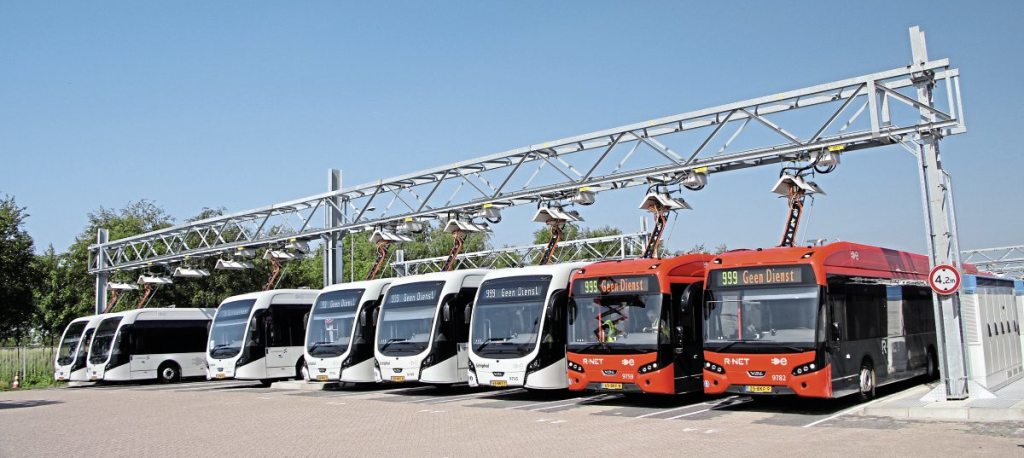
The different styling of the two bus types is illustrated in this shot. They have identical drivelines
As well as the two main depots, there are two smaller recharging sites located at Schiphol P30 and Schiphol Knooppunt Noord which each have 2mVA grid connections and four 450kW fast chargers. Buses pull in and out throughout the day for a process that takes 12 minutes. Of note is that the Knooppunt Noord facility is adjacent to a large covered bus station within an up-cycled WW2 RAF aircraft hanger.
Bart pointed out that different schedule planning was required because of the limited range of battery buses. He revealed that the 100 new electrics were doing the work previously done by 86 diesels. The agreement with VDL stipulates a 96% availability for service figure, the same as diesels, something VDL is happy about as the similar Eindhoven contract is achieving 99.8% after 18 months.
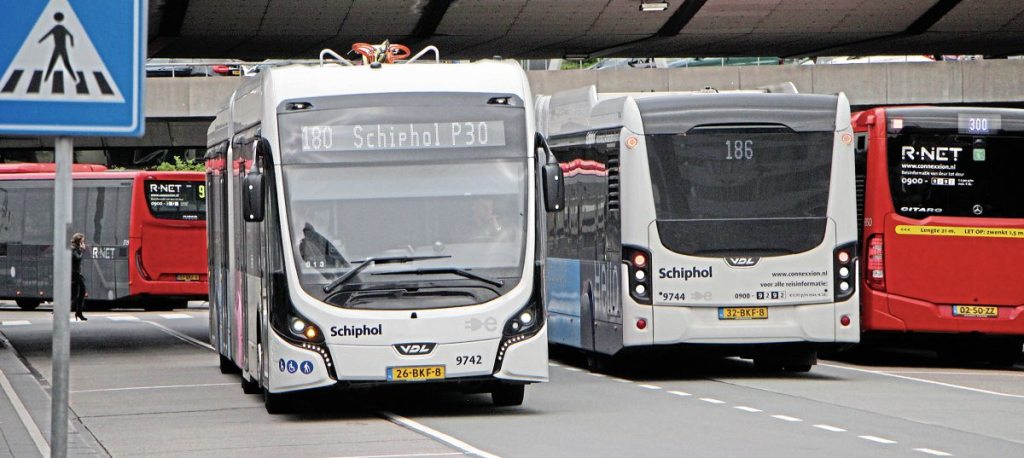
Two of the Schiphol Net fleet outside one of the terminals. There are diesels present but this will become a ZE only zone for buses
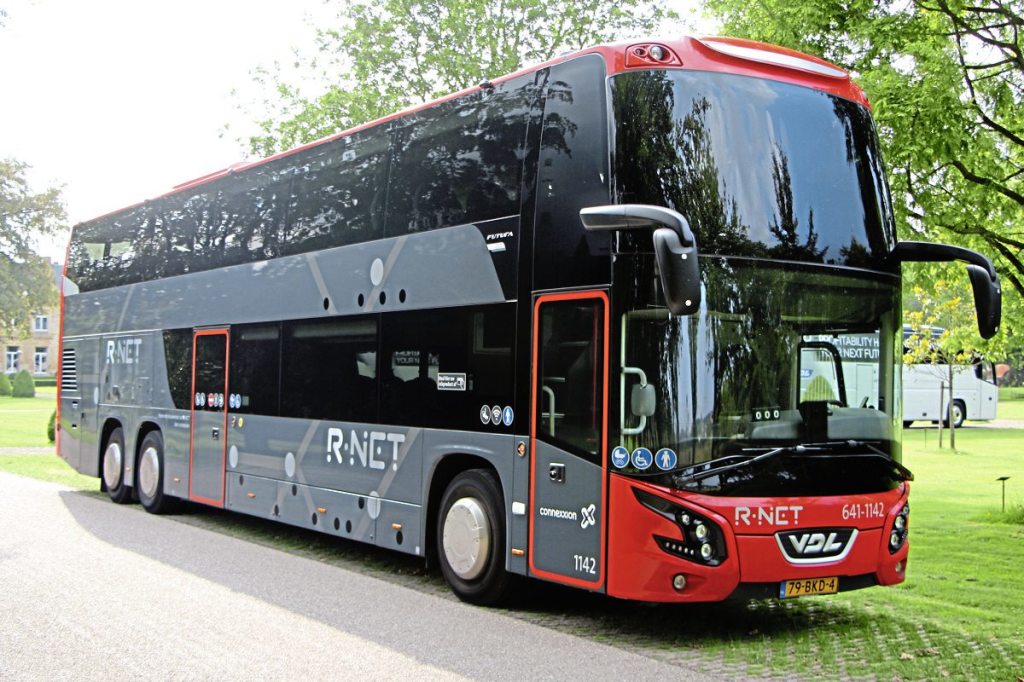
VDL Futura FDD2 double decker from a batch of 18 used by Transdev Connexxion will be one of the few diesels to operate through to the end of the contract
Challenging
Gerard Hellburg summed up the challenges and said that local authorities had to recognise the need for charging equipment and recognise the spatial challenge of charging electric vehicles in public spaces.
Meeting the need was challenging but created synergy that allowed E-Hubs to be created. It was important that the charging infrastructure you put in is strategically placed to enable it to serve the main routes and build in a degree of future proofing. These charging locations have to be close to the power grid. He noted that if the Government do not prescribe the method of achieving zero emissions, the operator or market would offer its own, which may not be the best technique. He also noted that it may be inevitable that some charging sites would be in sub-optimal locations.
Local safety regulations have to be checked, because they found that some tunnels on proposed routes had bans on gas, hydrogen and/or electric buses, so he advised getting to know your transition partners.
It is also important to have: the commitment of all stakeholders; understanding from all parties on their responsibilities within agreements; transparency on costs; the flexibility to be able to learn; and to ensure that the transition is both manageable and affordable.
Last word
The Amstelland Meerlanden concession and all of those involved in providing it illustrate what can be achieved if there is the money and the commitment to doing it, though this level of investment will not be possible everywhere. ZE schemes do make a significant contribution to the local environment but, as a constant stream of jets coming in to land at Schipol reminded us, there is still an awful lot to be done.
Vehicles
One thing the Connexxion ZE contract proves is that manufacturers can no longer simply supply operators with a bus that will do any job, but a solution.
Whether they also supply the charging infrastructure or not, to maximise a vehicle’s performance, indeed to ensure it is capable of doing the job at all, they need to know what the customer wants it to do, for how many hours a day, over what distance and in what operating environment. Only when they have this knowledge can they determine how a bus needs to be specified.
Alex de Jong, Business Manager Public Transport for VDL Bus & Coach, ran through the different stages required for the introduction of zero-emission electric buses. First, the route data had to be analysed and the customer’s requirements checked. Then, based on the information gleaned, the best choice of battery and charging system could be determined.
Once this was done there was the implementation stage when what needed to be done was defined, the buses were built, the infrastructure planned, manufactured, installed and tested followed by the training of the staff and the testing of systems. Finally the operation started and VDL remained on board with maintenance and monitoring the processes.
The Citea Electric was launched during the UITP event in Geneva in 2013, with the first five two-axle buses delivered to Munster as part of the EU’s ZeEUS project (four funded by ZeEUS, one by local funding) in 2015. Eight artics for Cologne followed, with subsequent Dutch orders including 43 Citea SLFA Electrics for South-east Brabant and 30 Citea Electrics of different models for Arriva’s South-east Friesland and Limburg concessions. It is not currently offered in the UK.
For the VRA contract, the Citeas specified have identical drivelines featuring a Siemens 210 kW central motor, 168kWh high power coolant-conditioned batteries, and two charging systems. For fast charging there is a front-mounted Schunk pantograph for charging at 450kW, while for slow charging there is a Combo 2 slow-charging pantograph used at the depots, fed by the two 30kW chargers. The Combo 2 connection is on every vehicle available and can be used in the workshop.
By using the pantographs instead of the Combo 2 plug the depot is cleaner, and the cost for operation in the depot is lower, with no wiring which can be damaged. The buses also have Thermo King climate control systems, brake energy heat modules with auxiliary circulation pumps, increased efficiency heat pumps, and additional bio-diesel heaters. Where they differ is in the body styling and layouts.
The Schiphol Net buses have BRT styling and a predominantly white livery. There are four doors with a single front door and a passenger capacity of 45 seated and 79 standing passengers. The conventionally styled red and grey R-Net buses have three double doors and a capacity of 49 seated plus 78 standing passengers.
